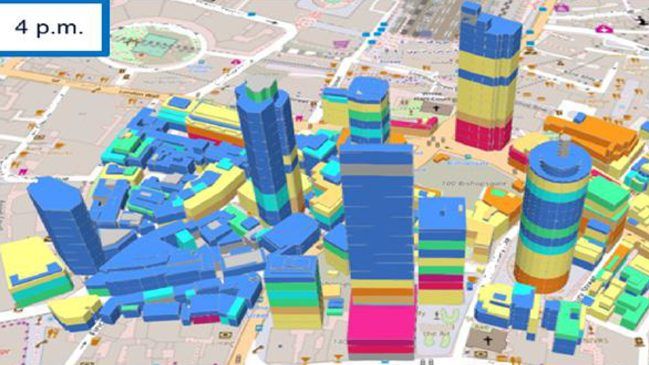It is a serious over-simplification to say that small cells improve capacity and coverage. They only do this optimally and cost-effectively if they are deployed in the very best locations. As 5G looms, and the number of cells increases exponentially in some urban or commercial environments, planning will become critical to the business case for densification.
Accurate planning has always been important – in the early days, Orange and others published figures to show the contrast in user experience when a single cell was deployed in different outdoor locations, with as much as five times slower speed when the cell was sited sub-optimally.
But now, the challenges of planning the best sites to achieve well-targeted, interference-free signals for 4G and 5G, while keeping costs under control, have increased significantly. Operators may deploy 10 times more cells per square kilometer – or even more in some dense environments like stadiums – to meet the need for very high levels of data usage and for truly ubiquitous coverage. Rolling out this large number of cells can, if planning is not extremely accurate, become very slow and expensive, and result in a poor user experience because of interference.
A new paper, co-authored by SCF and 5G Americas – ‘Precision planning for 5G Era networks with small cells’ – provides operators with a detailed blueprint for precision planning of small cells, which will enable them to avoid the pitfalls of densification.
These pitfalls are clearly perceived by MNOs. Many operators, while acknowledging the need to deploy and manage large numbers of cells, are concerned that this will make densification cost-prohibitive. In a recent survey of 78 mobile operators, SCF found that the main barriers to deploying small cells, indoors or outdoors, in dense environments related to cost, siting issues and quality of service (QoS) challenges.
 As the graph shows, access to cost-effective sites is rated as a top two challenge by 30% of operators round the world, while cost, ROI and interference issues are all placed in the top two by over 20%.
As the graph shows, access to cost-effective sites is rated as a top two challenge by 30% of operators round the world, while cost, ROI and interference issues are all placed in the top two by over 20%.
Figure 1. Percentage of operators rating each factor as a top two challenge to at-scale densification
Precise location planning can address all these challenges. As the paper details, the benefit of any small cell site relates to the amount of traffic it carries, while the cost is tied to installation, power, backhaul, rent and so on – so the best ROI will depend on calculating the optimal number of cells to meet current and future data demands, without over-provisioning, which wastes money and risks interference. Recommended best practice is to locate the small cell within 20-40 meters of the ideal.
This means that planning requires extreme precision in the 5G era. Tools and best practice are developing quickly to meet the challenge, and the new paper describes these in detail based on inputs from a large number of members of both organizations.
A key emerging approach to planning is to use ultra-precise geolocated measurements of network quality to build a map of the existing network and its QoS levels, in order to identify the locations where there is high usage but inadequate signal. Accuracy levels are greatly increased by applying machine learning (ML) to analysis of the location and performance data. This was found to reduce the median error in identifying the best location from 60 meters with conventional tools, to 18 meters, which is within the recommended range.
The paper is summarized with three key messages about best practice in small cell planning:
- For maximum ROI, small cells should be placed as close as possible to demand peaks; best practice is within 20-40 meters
- Smarter algorithms and ML can reduce median location errors to less than 20 meters, which is essential for small cell planning
- Machine learning models should be part of any small cell design effort. Different inputs and assumptions will be factors in the resulting models that are generated
Applying the processes and practices detailed in the paper will greatly reduce the cost and risk of deploying large numbers of small cells. ML-based and other cutting edge planning techniques are evolving quickly to meet the demands of 5G and these technologies are becoming readily available.
For further information, including access to the report, and a short video, please visit the Precision planning for 5G Era networks with small cells landing page.
